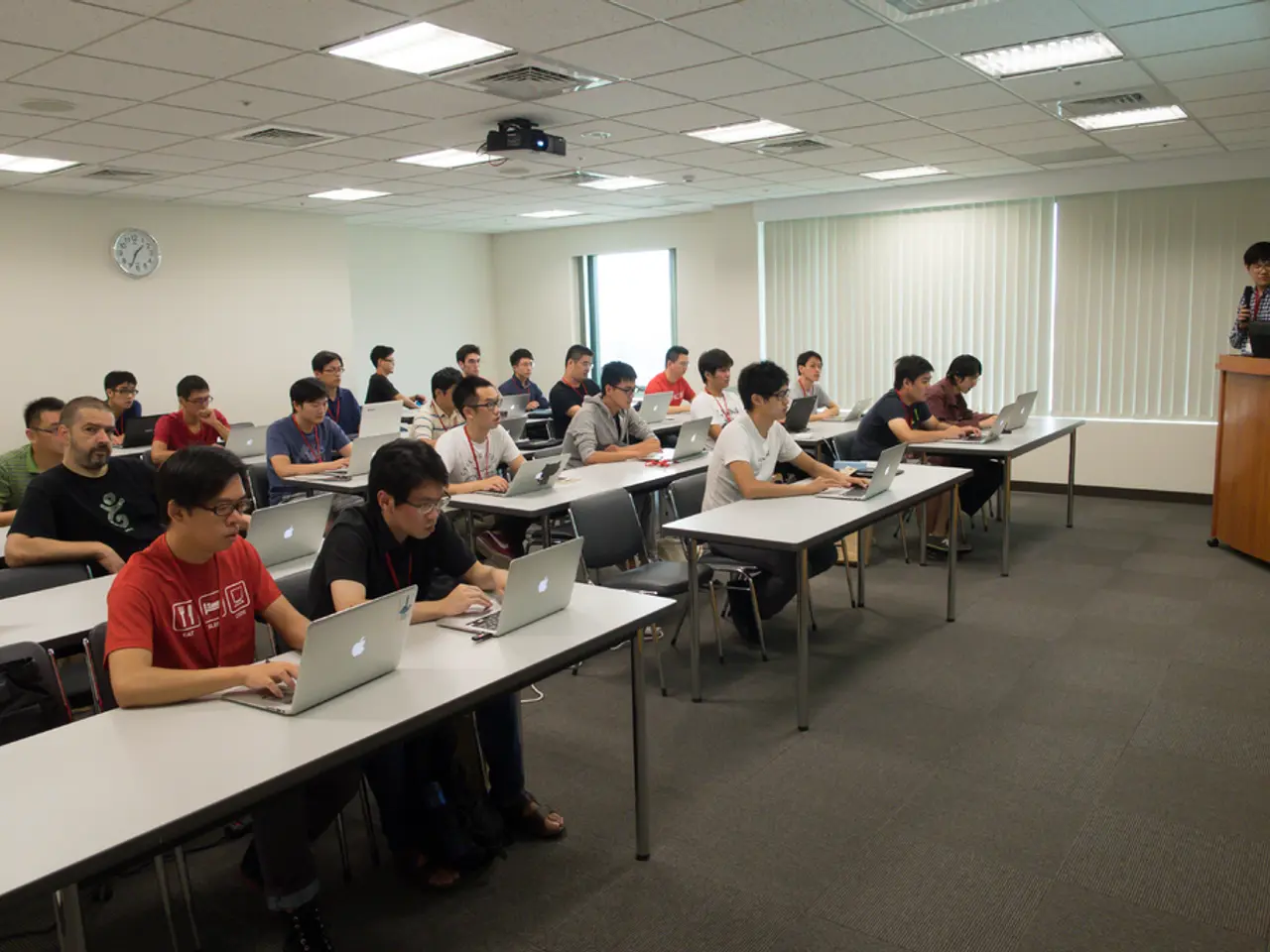Monitoring Work Time: Examining the Balance Between Responsibility and Supervision
In the modern world of work, time tracking has become a standard practice for global teams, particularly in the realm of remote and hybrid work environments. This system, designed to provide visibility into how time is spent during work hours, is not a tool for micromanaging or controlling how teams work, but rather a means for teams to work smarter, make informed decisions, and better allocate resources.
According to the Workstyle Revolution Report, 85% of respondents rejected the outdated myth that remote teams are less productive than their hybrid counterparts. This shift in perception is a testament to the effectiveness of time tracking when it's a shared commitment, not an individual burden.
Effective time tracking requires clear communication, employee involvement, privacy consideration, and a focus on supportive outcomes rather than control or surveillance. Here are some key strategies:
- Set clear, fair expectations upfront: Explain what and why time is being tracked, emphasizing productivity and outcomes rather than constant surveillance.
- Use transparent systems: Allow employees to access and review their own time tracking data. This builds trust and gives them control over their work records.
- Choose respectful time tracking tools: Opt for manual input or simple timers instead of automated screenshots or recordings to avoid privacy concerns and reduce pressure.
- Avoid micromanagement: Focus feedback on long-term patterns or trends rather than isolated instances to minimize stress associated with feeling watched.
- Implement flexible approaches: Adapt to different roles, schedules, and work locations, especially for remote or hybrid teams, rather than a one-size-fits-all system.
- Emphasize time tracking as a tool to support employee well-being: Identify workload issues and prevent burnout, not just enforce overtime or micromanage behavior.
- Use asynchronous communication tools: Keep managers informed without unnecessary check-ins or intrusive monitoring.
- Foster a culture of workflow transparency and team autonomy: Ensure that tracking is part of the team's overall workflow, not a surveillance or punitive mechanism.
Tools like Clockify, which allows manual or timer-based tracking without forced screenshots, and platforms that integrate shared project progress and asynchronous reporting, are examples of this approach. Such practices align with employee preferences emphasizing fairness, ease of use, flexibility, and transparency to build trust around time tracking.
Moreover, analyzing tracked data can uncover bottlenecks, workload imbalances, or resource gaps, used to offer help instead of handing out reprimands. This proactive approach fosters a positive work environment and encourages team collaboration.
Case studies such as My Biz Niche, a digital marketing agency, and Wire2Air | TXTImpact, a New York-based SaaS company, have seen improvements in operations and productivity after implementing Hubstaff's automated time tracking tool. Affordable Staff, a leading outsourcing provider, also reported an 80% reduction in management time and a noticeable shift in team behavior after implementing Hubstaff's automated time tracking and productivity monitoring.
In conclusion, embracing transparent time tracking can lead to increased productivity, improved team dynamics, and a more supportive work environment. By focusing on outcomes, fostering transparency, and respecting employee autonomy, time tracking can be a powerful tool for driving success in today's remote and hybrid work environments.
- Hubstaff's blog often features articles on education-and-self-development and personal-growth, offering insights on how effective time tracking can be a key component in personal productivity.
- For teams seeking to adopt a time tracking system, considering demo options of platforms like Hubstaff can provide a valuable glimpse into their transparency, ease of use, and alignment with the principles of productivity and personal growth.
- Embracing transparent time tracking practices, as highlighted in the Workstyle Revolution Report and exemplified by companies like My Biz Niche and Wire2Air | TXTImpact, contributes significantly to the growth and development of remote and hybrid teams, fostering a culture of productivity and collaboration.




